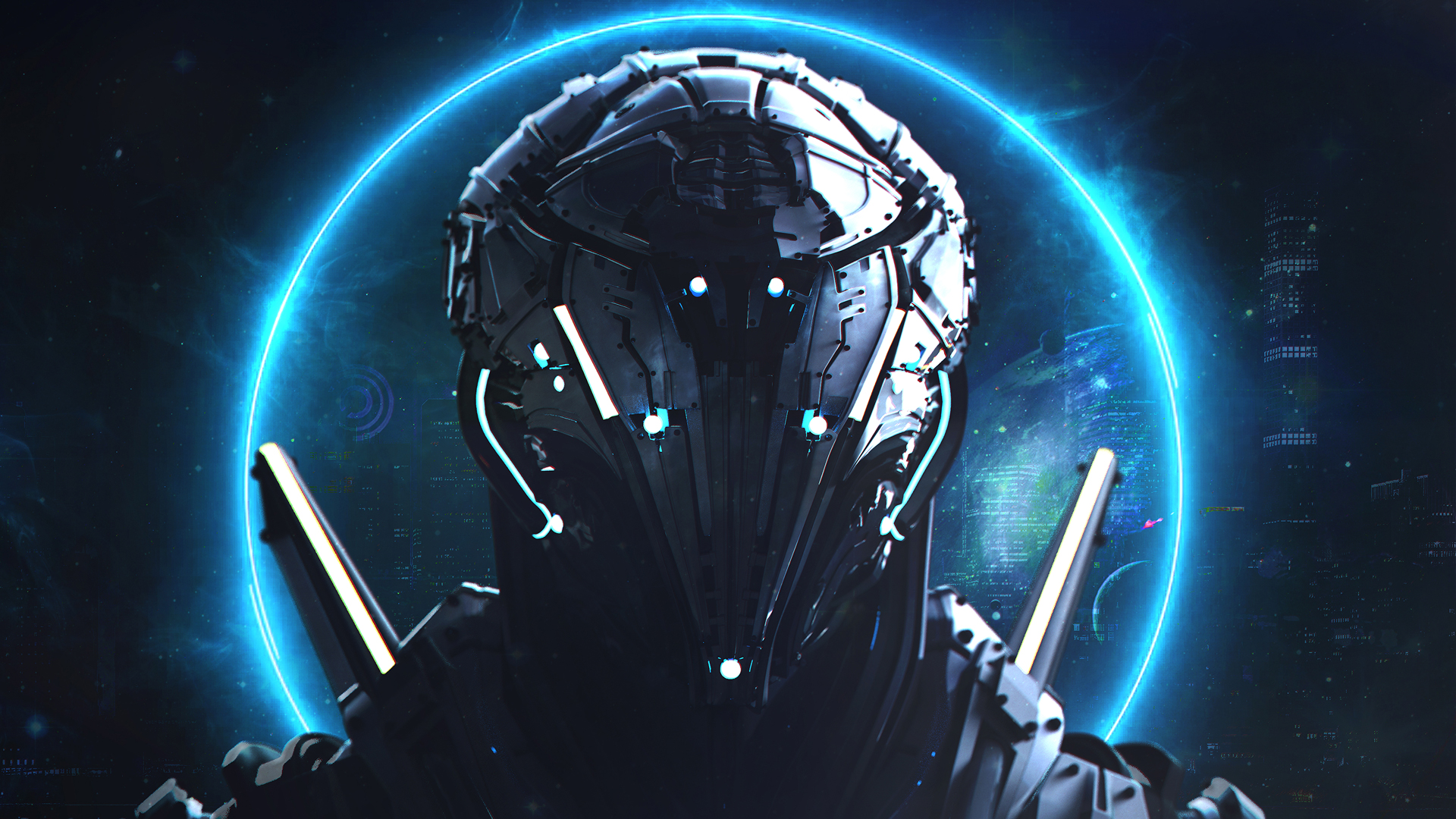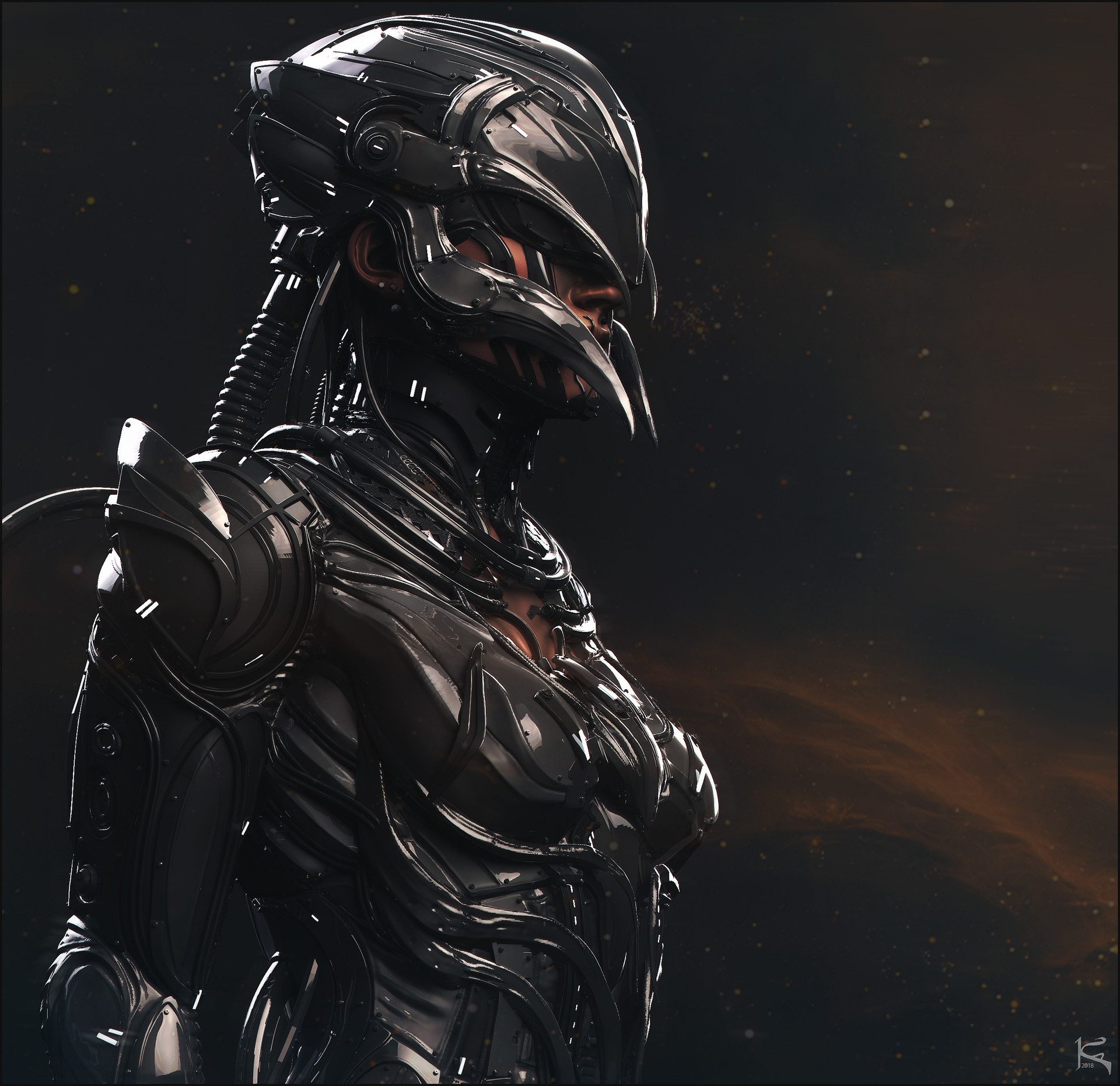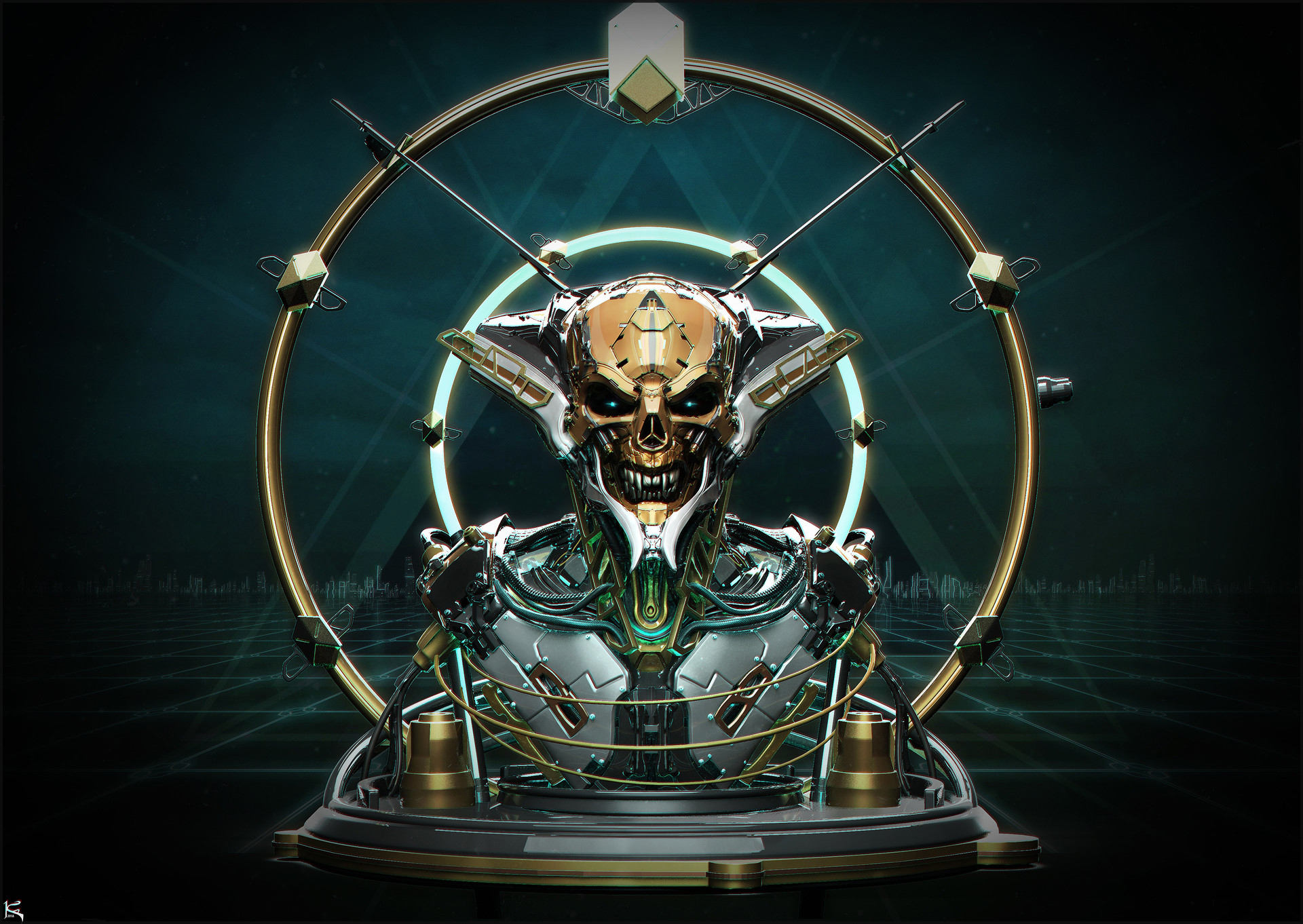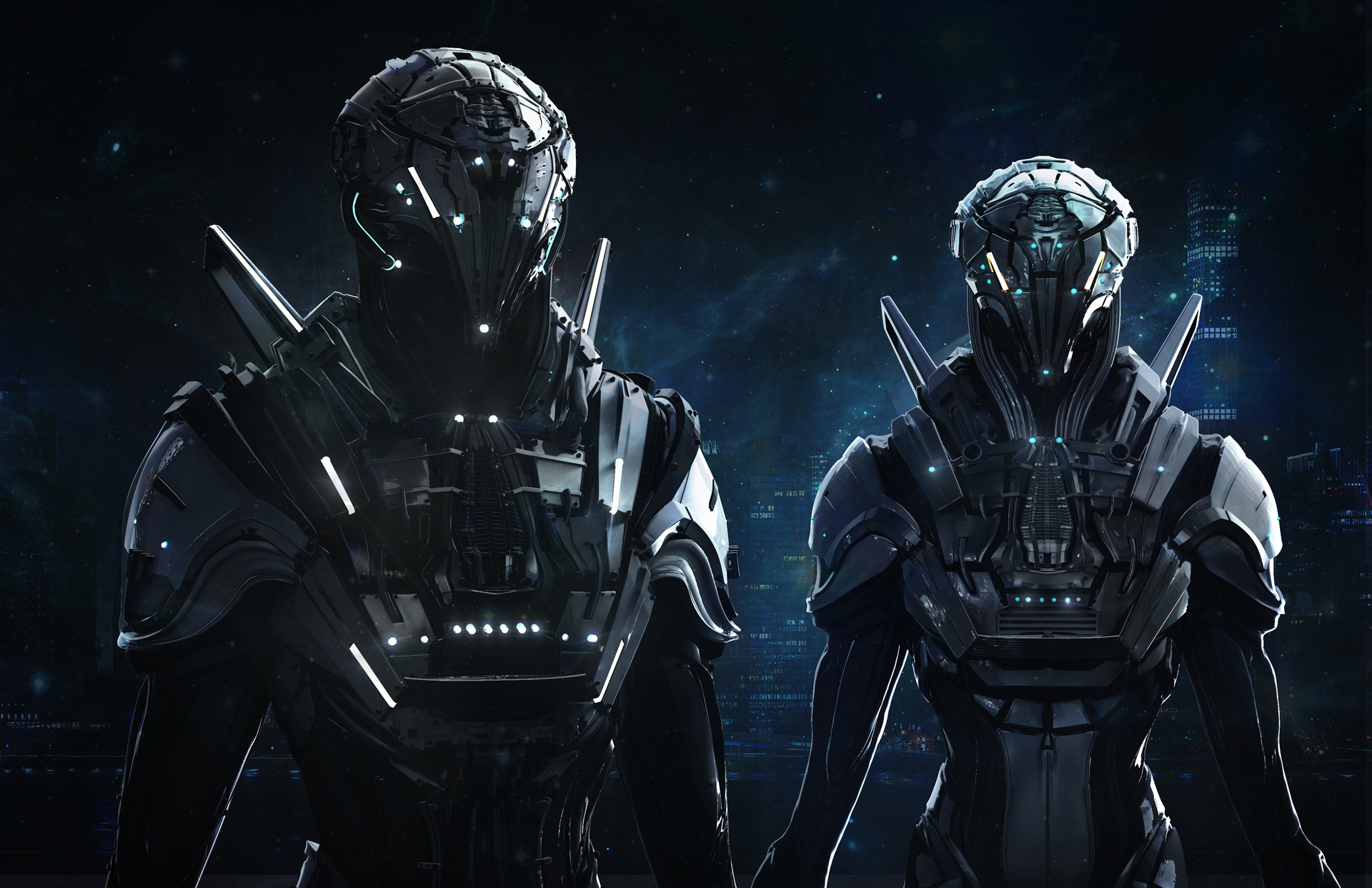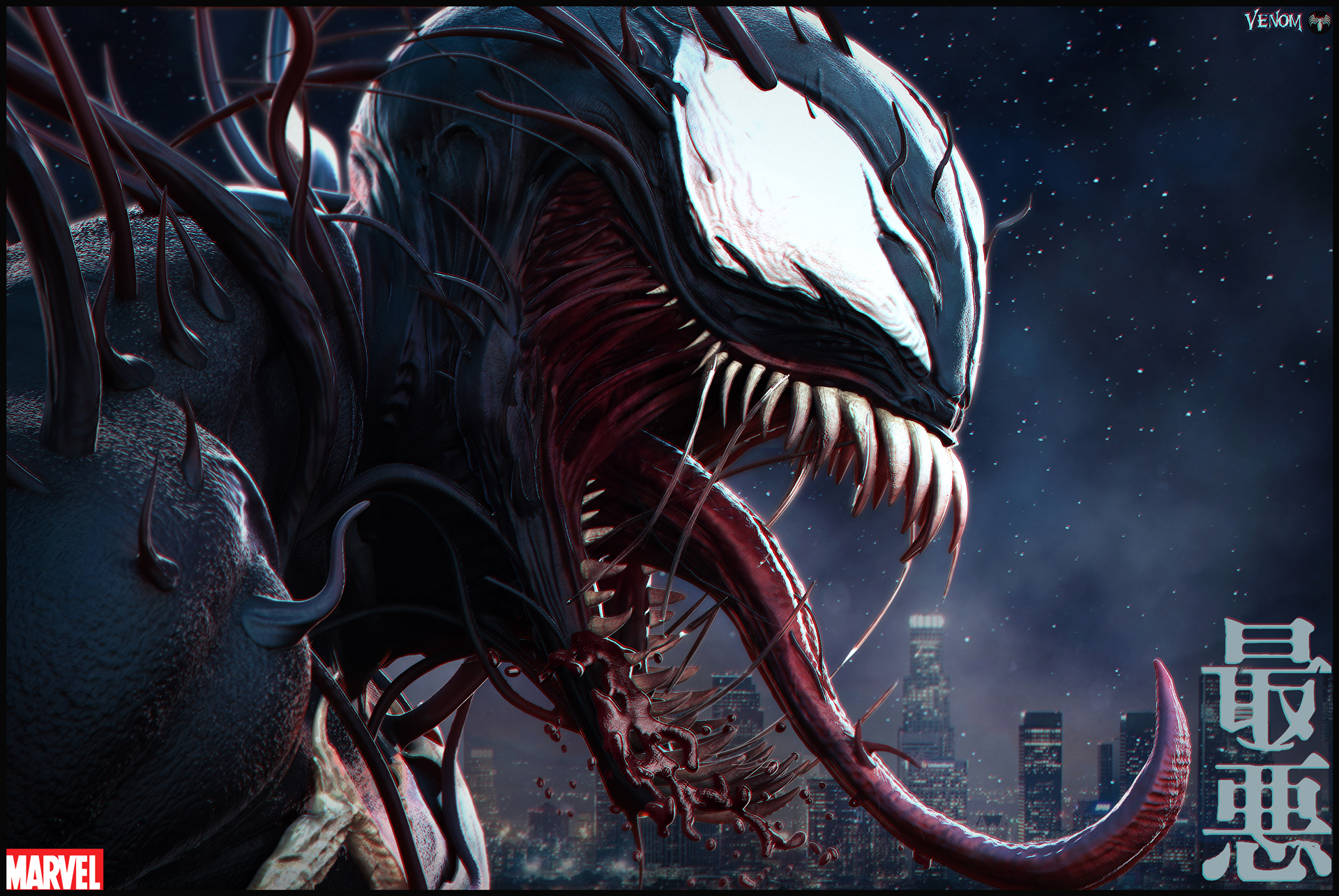Kenny Carmody is a professional 3D Character Artist at Cloud Imperium Games with talent that stretches across modeling, texturing, and concept development, where he displays an incredible eye for lighting and detail. He has most recently worked on films such as The Mummy, Godzila: King of Monsters, Alita: Battle Angel and others. KeyShot has become an important tool to him for everything from concept sheets to final imagery for clients. We talked with him to learn more about how he got started and just how he uses KeyShot in his workflow.
Kenny Carmody
What sparked your interest in becoming a 3D Artist?
I have always admired the art of video games and movies in general. When I was younger, there were not a lot of schools offering studies in video game art. Fortunately, when studying as a Digital Media Engineer for Games and Animations, I had the opportunity during a 2-week seminar to meet one of my biggest inspirations and mentors, Phil Amelung. He basically came into the room and did a creature doodle. I was so inspired I decided that’s what I want to do–it hasn’t changed ever since. I think of this moment every day when I open ZBrush and during those brief moments of down time.
What was the turning point in your career?
My professional highlight so far has definitely been MPC London. For me personally, it was the biggest challenge and opportunity of my career. It bolstered by personal belief, production ability, and helped me raise the bar with my artwork to produce high-quality concept models for film within the art and asset department. I have met and worked with really inspiring people. That really goes for all the companies I have worked with. A highlight throughout all of this is how people within our industry are very open and friendly, mostly like-minded, and open to the beauty of variety in our society and world. My favorite project was definitely Godzilla: King of the Monsters. The upcoming live-action remake of The Lion King, as a fond childhood memory, is another. Every project had its benefits in both learning and doing something new so I always appreciated the variety of work. At last, I would like to also say that a personal highlights are participating in the “ZBrush Summit 2018 – Sculpt-Off”, moving to the west coast and work on a AAA title, which is now with Cloud Imperium Games.
 What is unique about your approach to a project?
What is unique about your approach to a project?
I would like to break this one into two parts–my professional experience and my personal approach. I would not say it’s unique but just mine.
Professionally, I approach projects very structured and heavily focused on the end result. I like to have everything on paper, written down, so whoever works me with can view it and helps in communication with the responsible person/department. Let me say, while creating a creature or character I will work closely, communicate regularly, with the Rigging Department, TechArt Department, Animation Department and so on. You need to set priorities for primary needs and have a good breifing before the start of anything so there is no miscommunication. And then, let the magic happen!
Personally, I approach projects very loose and let the ideas flow. I love to just sculpt before going to bed and see what my imagination brings out. For me, it’s like taking a deep breath so I can free my mind and get the idea out with no structured plan or thought. Of course, while creating you think about the anatomy, what kind of environment the character/creature is in, as well as what their personality is like. But I prefer to shut out my thoughts and just see what comes to life!
What is your primary 3D modeling software?
My primary 3D modeling pipeline includes a range of software to keep the process simple. I use Pixologic ZBrush, Autodesk Maya & 3ds Max for modeling, since this is quite the standard for a production environment. (I began modeling using XSI Softimage and then switched to 3ds Max.) Overall I try to stay in the same software as much as I can doing about 90% of my modeling within ZBrush, especially for concept modeling. There’s no other tool which is faster for creating concepts. In my opionion, there is a lot of amazing tools and software which can lead you to the same end result–understanding the basics of modeling, sculpting, and SubD modeling can be translated to any software package–so I’m always open to what other tools can fit within my workflow.
Where in the process do you use KeyShot?
There are many way to use KeyShot. Professionally, I used KeyShot to present model sheets to the associate art director, director and leads and also finished high poly models to clients. Personally, I use KeyShot on a daily basis while I am sculpting. KeyShot is my toolset for 3D model import and an amazing render engine with real-time shaders, lighting and so many other beautiful features. To explain my workflow briefly, it’s important to send my model to KeyShot as soon as possible to see what works and set up lighting. For me, the most critical features are being able to quickly set a correct focal length and having a real-time lighting environment.
What makes KeyShot an important tool to have?
 The most benefit I see of KeyShot is the quality and especially the efficiency. There is nothing like KeyShot that matches quality output with click and drag functionality to make the creative process really fun and enjoyable. Keyshot is a very advanced software and has an even more advanced render engine–you can get lost tweaking the parameters of the shaders but, in general, it has a very user-friendly interface, plus its easy to learn and use for everyone who wants to present their model in a professional way. Lighting and material are crucial to modeling and presenting and KeyShot provides this to create professional results in real-time.
The most benefit I see of KeyShot is the quality and especially the efficiency. There is nothing like KeyShot that matches quality output with click and drag functionality to make the creative process really fun and enjoyable. Keyshot is a very advanced software and has an even more advanced render engine–you can get lost tweaking the parameters of the shaders but, in general, it has a very user-friendly interface, plus its easy to learn and use for everyone who wants to present their model in a professional way. Lighting and material are crucial to modeling and presenting and KeyShot provides this to create professional results in real-time.
What advice would you give to someone interested in doing what you do?
This is definitely a hard one. In the end, you have to be responsible with what you want to do and where you want to be. You need to be positive and open to working in the gaming and video industry. It’s creative work, with a multi-billion industry behind it, which is counting on your dedication. Don’t let this bring you down though. I’ve experienced that it’s consistency and training that is key. For me, to stay healthy is the best advice I can give you. Stay positive, work hard, and never give up on your dreams. It’s hard for me to give advice since I’m also learning every day. So I guess I would end it by saying to keep on learning, practicing, and studying!




